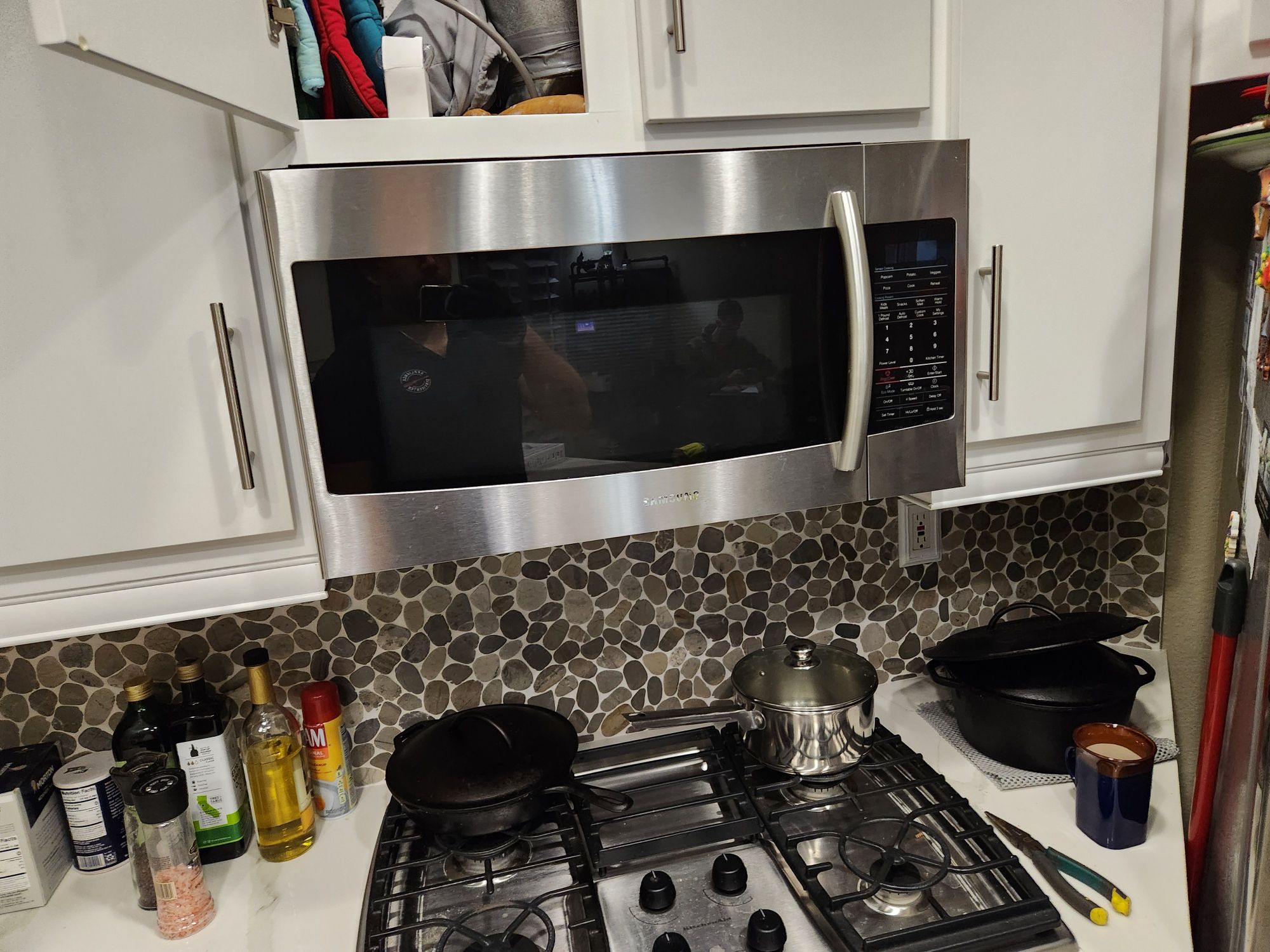Microwaves are an essential kitchen appliance, bringing convenience and efficiency to everyday cooking. But when your microwave suddenly refuses to turn on, it can be frustrating and confusing. While it’s always best to seek professional help for more serious repairs, there are some initial troubleshooting steps you can try to pinpoint the issue and determine if it’s something you can handle on your own. In this article, we’ll walk you through common reasons why microwaves may not turn on and practical repair tips you can try before reaching out to a professional.
⠀
- Check the Power Source
The first step in troubleshooting a microwave that won’t turn on is to ensure it’s getting power. Unplug the microwave and plug it back in, making sure the plug is firmly connected to the outlet. If it still doesn’t turn on, test the outlet by plugging in another device, like a toaster or blender, to see if the outlet is working. Alternatively, try plugging the microwave into a different outlet.
Sometimes, the issue might be a tripped circuit breaker. Locate your home’s breaker panel and check if the breaker for the kitchen or microwave has tripped. If it has, reset it and try turning on your microwave again.
- Inspect the Door Switches
⠀
Microwaves are designed with safety in mind, which is why they won’t operate if the door isn’t securely closed. Faulty door switches are a common reason for microwave power issues. Over time, these switches can wear out, which can prevent the appliance from starting.
⠀
If you’re comfortable with basic electrical work, you can check the door switches using a multimeter. First, unplug the microwave, remove the control panel, and locate the switches behind the door latch. If the multimeter doesn’t register continuity, the switch is likely defective and needs replacement. Keep in mind, though, that working with microwaves can be dangerous due to their high-voltage components. If you’re uncertain, consider seeking help from a professional.
⠀
- Test the Thermal Fuse
⠀
The thermal fuse in a microwave acts as a safety measure to prevent overheating. If your microwave overheated during a previous use, the fuse may have blown, causing the unit to stop working. To test the thermal fuse, you’ll need to access the control panel and locate the fuse, which may be positioned near the magnetron or power supply.
⠀
Using a multimeter, test the thermal fuse for continuity. If there is no continuity, it means the fuse is blown and needs to be replaced. Since accessing internal components like the thermal fuse can be complex, it’s often safer and more efficient to have a technician handle the repair.
⠀
- Assess the Door Latch Assembly
⠀
Another part to consider is the door latch assembly. This assembly ensures that the microwave door stays tightly closed, enabling the appliance to function properly. If the latch assembly is broken or misaligned, it may prevent the microwave from starting.
⠀
To inspect the latch assembly, look for any visible cracks or signs of misalignment. Small repairs, like adjusting the latch position, may solve the problem. If the latch assembly is damaged beyond repair, it may need to be replaced.
⠀
- Examine the Control Board
⠀
The control board is essentially the microwave’s “brain.” It sends signals to various parts of the microwave to initiate functions like heating and cooking. If the control board fails, your microwave won’t respond to any input, and it won’t turn on.
⠀
Diagnosing control board issues often requires specific technical knowledge and access to replacement parts. Therefore, it’s recommended to reach out to a professional technician if you suspect the control board may be the issue. A professional can identify if the control board needs a replacement or if there’s an underlying issue that can be resolved.
⠀
- Consider Magnetron Failure
⠀
The magnetron is a key component in any microwave, responsible for generating the microwaves that cook your food. If it’s malfunctioning, it can prevent the microwave from starting. This part can wear out over time, particularly if you frequently use the microwave at high power levels.
⠀
Testing or replacing a magnetron can be dangerous, as it involves working near high-voltage areas. If you suspect the magnetron may be faulty, it’s best to seek the help of a certified technician.
⠀
- When in Doubt, Call the Professionals
⠀
While it may be tempting to try DIY repairs on your microwave, these appliances contain high-voltage components that can be hazardous to work on. If you’re not comfortable or knowledgeable about handling electrical repairs, it’s wise to call a professional repair service.
A licensed technician will have the expertise to accurately diagnose the problem and safely perform any necessary repairs, saving you time and potential risk.
If you’ve tried the steps above and your microwave still won’t turn on, or if you’d prefer a professional opinion, Home Appliance Service Center is here to help. Our experienced technicians specialize in appliance repairs and are trained to handle even the most complex microwave issues. Don’t let a faulty microwave disrupt your routine – give us a call today and let our team get your microwave back up and running!
Contact us
 619-928-5000
619-928-5000  Request Service
Request Service 
